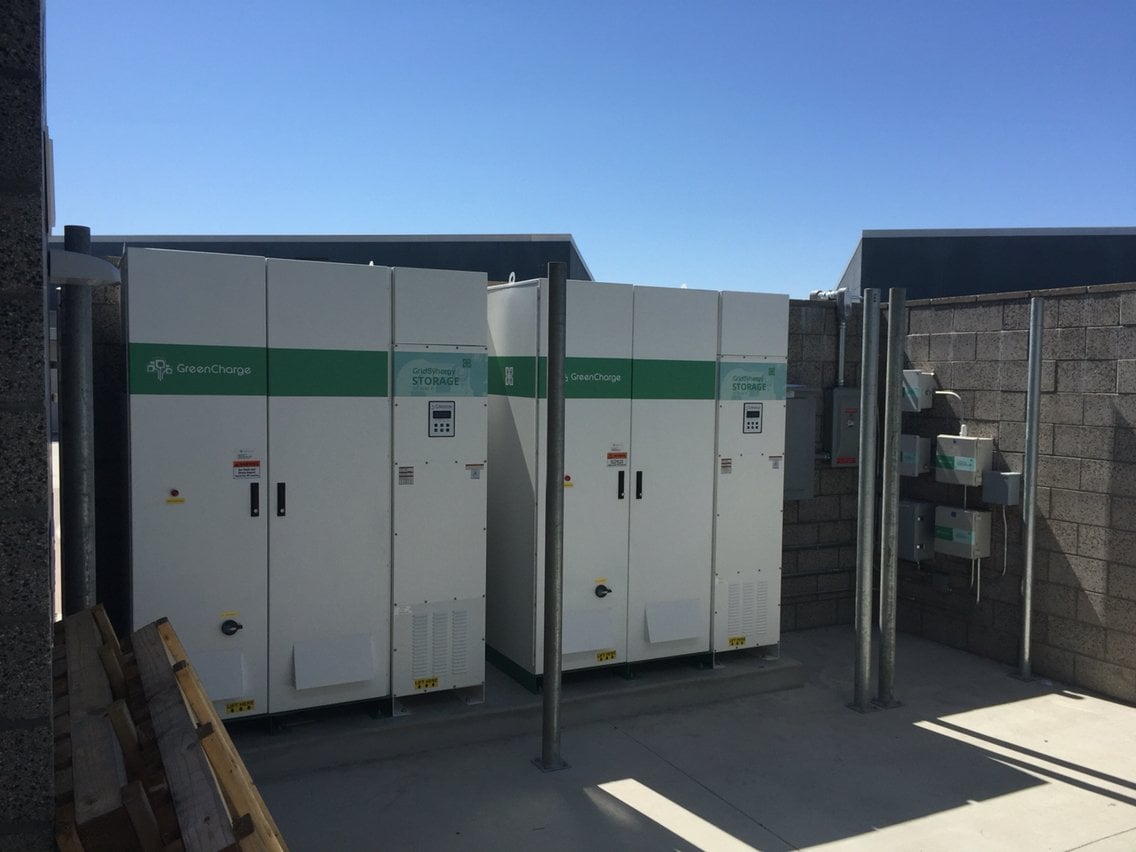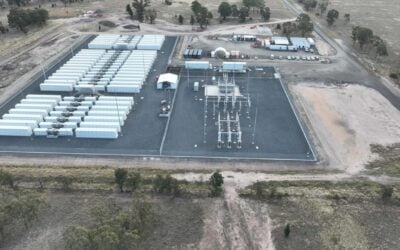
Commercial and industrial (C&I) energy storage in Europe, described by one analyst as “beginning to take off”, is the “most exciting” segment of the market at the moment, according to BYD’s global service partner.
Energy-Storage.news reported last week that Europe’s energy storage market as a whole grew rapidly in 2017, by around 49%, according to EMMES (European Market Monitor on Energy Storage), a half-yearly report produced by trade group EASE and research group Delta-ee.
Delta-ee analyst Valts Grintals said this big rise was due in part to the success of the behind-the-meter segment, encompassing residential systems as well as energy storage for business premises including offices, factories and warehouses which Grintals said has “finally taken off”.
Two leading markets identified in the EMMES report are Germany and the UK. Grintals said initial interest in the UK market was spurred by enabling greater self-consumption of onsite PV power, adding UPS and then building the scale to enter ancillary market services opportunities. In Germany, batteries are increasingly being used by businesses to reduce their demand charges, the portion of their bill which is based on use of electricity at the network’s busiest and most expensive times.
Try Premium for just $1
- Full premium access for the first month at only $1
- Converts to an annual rate after 30 days unless cancelled
- Cancel anytime during the trial period
Premium Benefits
- Expert industry analysis and interviews
- Digital access to PV Tech Power journal
- Exclusive event discounts
Or get the full Premium subscription right away
Or continue reading this article for free
Investors’ focus and priorities shifting
At various meetings throughout Intersolar Europe/ees Europe in June, Energy-Storage.news heard corroborating views from several sources, including Alvaro Garcia of EFT that the C&I market in Europe is starting to shine. EFT is a ‘global local service partner’ to Chinese lithium battery and EV maker BYD, initially servicing products for the UK market but now focusing on activities worldwide.
“The area of the market I find most exciting is C&I. I expect investors to move focus from grid-scale storage more towards C&I [energystorage],” Garcia said.
As Valts Grintals also said in our exclusive Q&A, Garcia believes opportunities for front-of-meter grid-scale energy storage – while lucrative and potentially a game-changer for decarbonisation – might be hard to come by for the moment, due to what he called an “obsession” with contracts.
“Grid-connected large storage has become a little bit of a sad space because of the obsession with contracts, which are often short in length, perhaps two years and investors will only look at that part of it, it can be hard to create more than one revenue stream, with a single buyer. So it got a little bit stuck.”
“In the C&I space, you have a lot more flexibility. First of all because it’s providing you with resilience to your [power] plants. For different manufacturers, there’s different value in resilience. At the same time, as you don’t need that [resilience] all the time, you can use the remaining charge in your battery to provide other services.”
Garcia said managing batteries is an increasingly simple process as technology improves, while forecasting with the help of intelligent energy management systems or service providers can optimise the use of the battery.
De-risking investments through flexible assets
According to Garcia, changes are coming so rapidly that it is now common for conversations to now be held directly with the CFOs of prospective customers rather than energy or sustainability managers, implying that the potentially positive impact of energy storage on a company’s bottom line is starting to be recognised.
Garcia also said that it is likely revenue streams for many services, particularly ancillary services provided to the grid, will change over time. Nonetheless, he said that each C&I customer will have portions of the day when power is more expensive to them.
“So even if the market for grid services collapsed entirely you still have those savings in the long term.”
This final point was picked up on in our video roundtable discussion “Silver bullets are for werewolf movies: being real about energy storage”, also filmed at the Munich event. Scott McGregor of vanadium flow energy storage provider RedT said that for his company, a typical C&I installation will involve the customer “taking charge of about 60% of their energy generation [using PV]”. Essentially, rather than rely on the merchant revenues of short-term grid services contracts, de-risking a business’ energy costs can provide a longer-term play, McGregor said.
“They [the customers] use more solar, they only buy [power] from the wholesale market, they take out their energy bills. Yes, they can deal with grid services and capture money while there’s policy [to do that] now, but that policy will change.”
Ultimately, McGregor said, the key to “a full-blown multi-trillion dollar industry” for energy storage is about providing low-risk long-term investments in energy infrastructure assets to attract pension funds to get involved, as has been seen in the C&I market in Canada over the past year or so.
The other side of the coin from the providers’ point of view, according to Delta-ee’s Valts Grintals, is the growth of the as-a-service proposition, as has been previously seen in early moving markets such as the US.
“When it comes to business models, in Europe there’s a few different trends emerging that try to make it simpler. There’s storage-as-a-service, which basically says to the customer ‘you pay me a monthly fee and I’ll give you savings’,” Grintals added.





